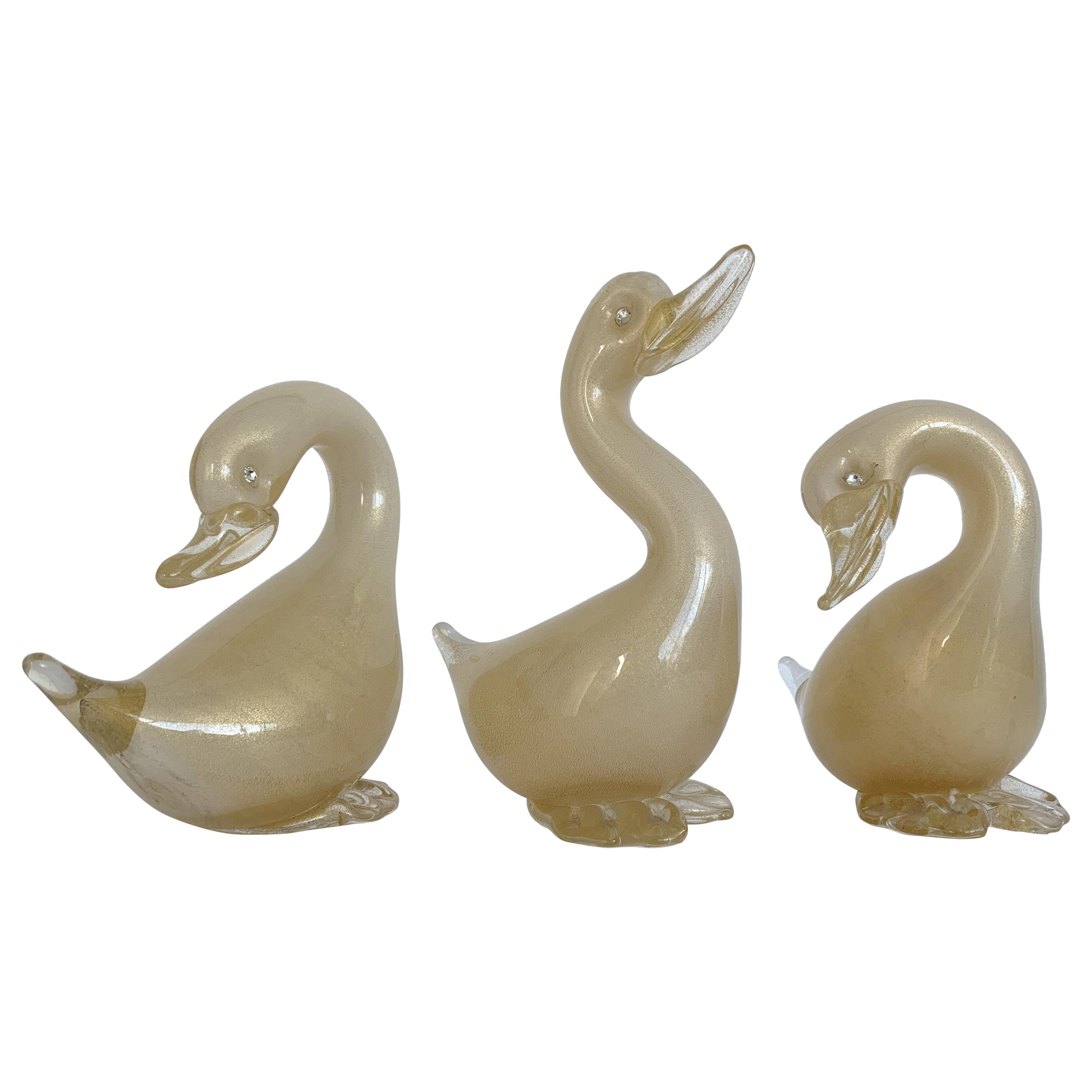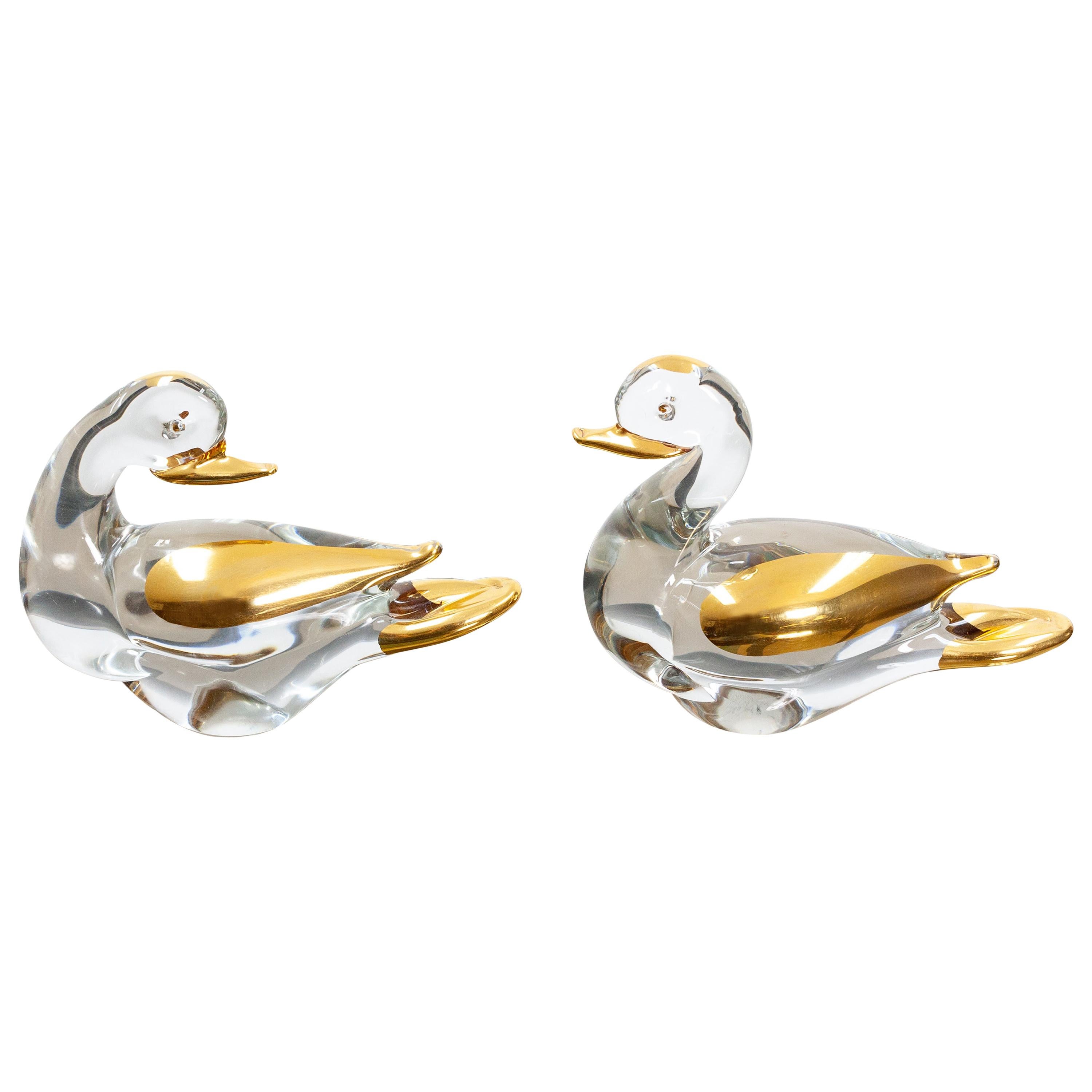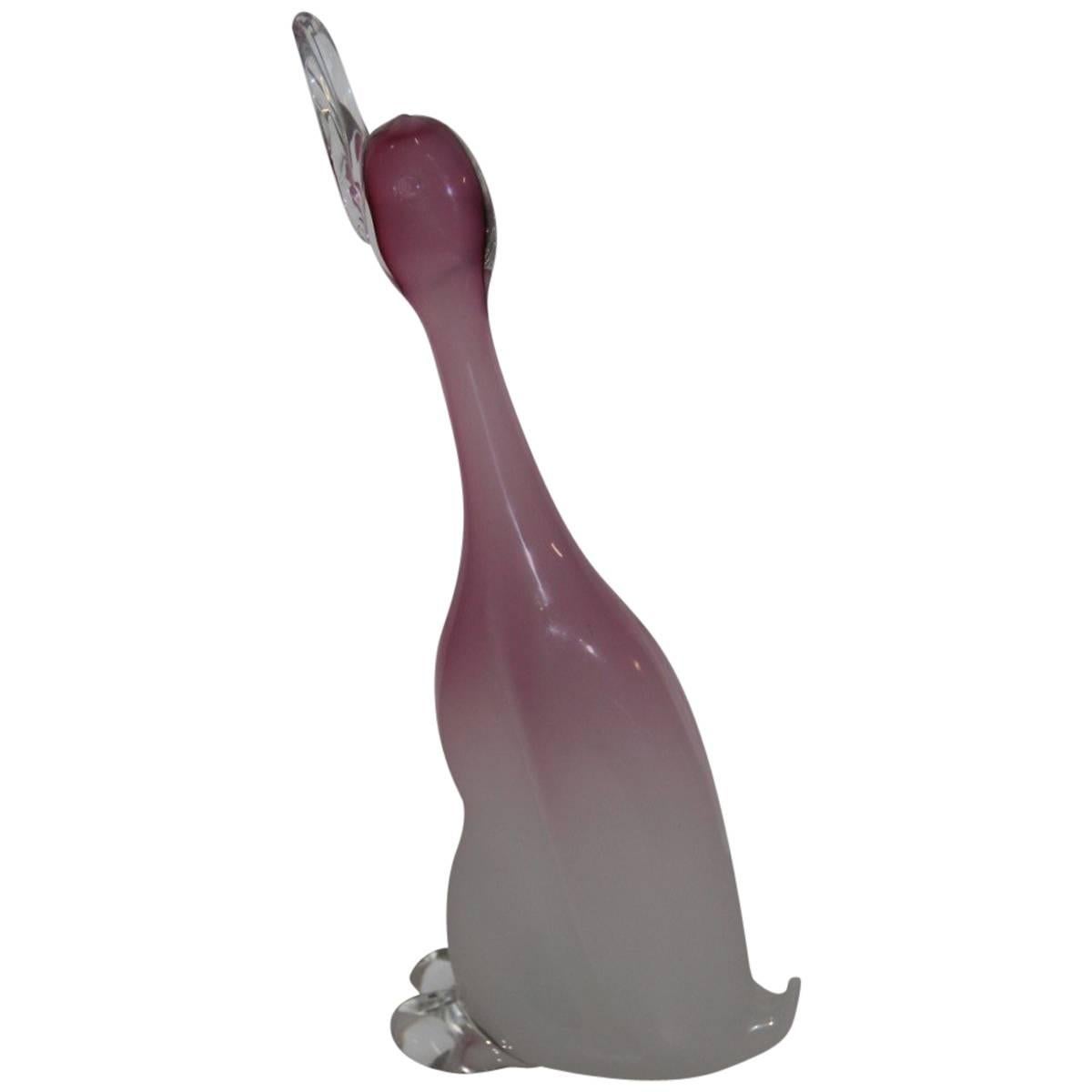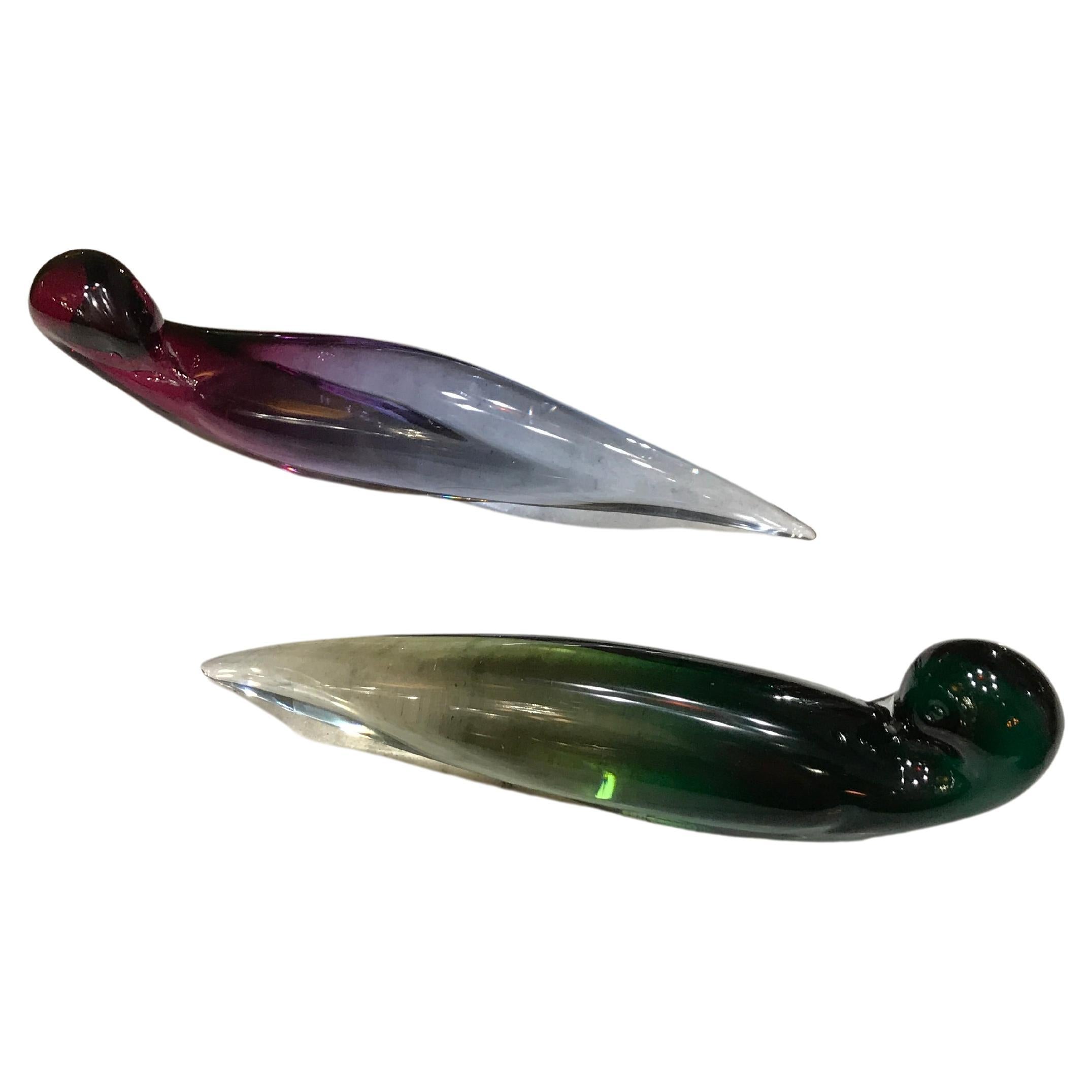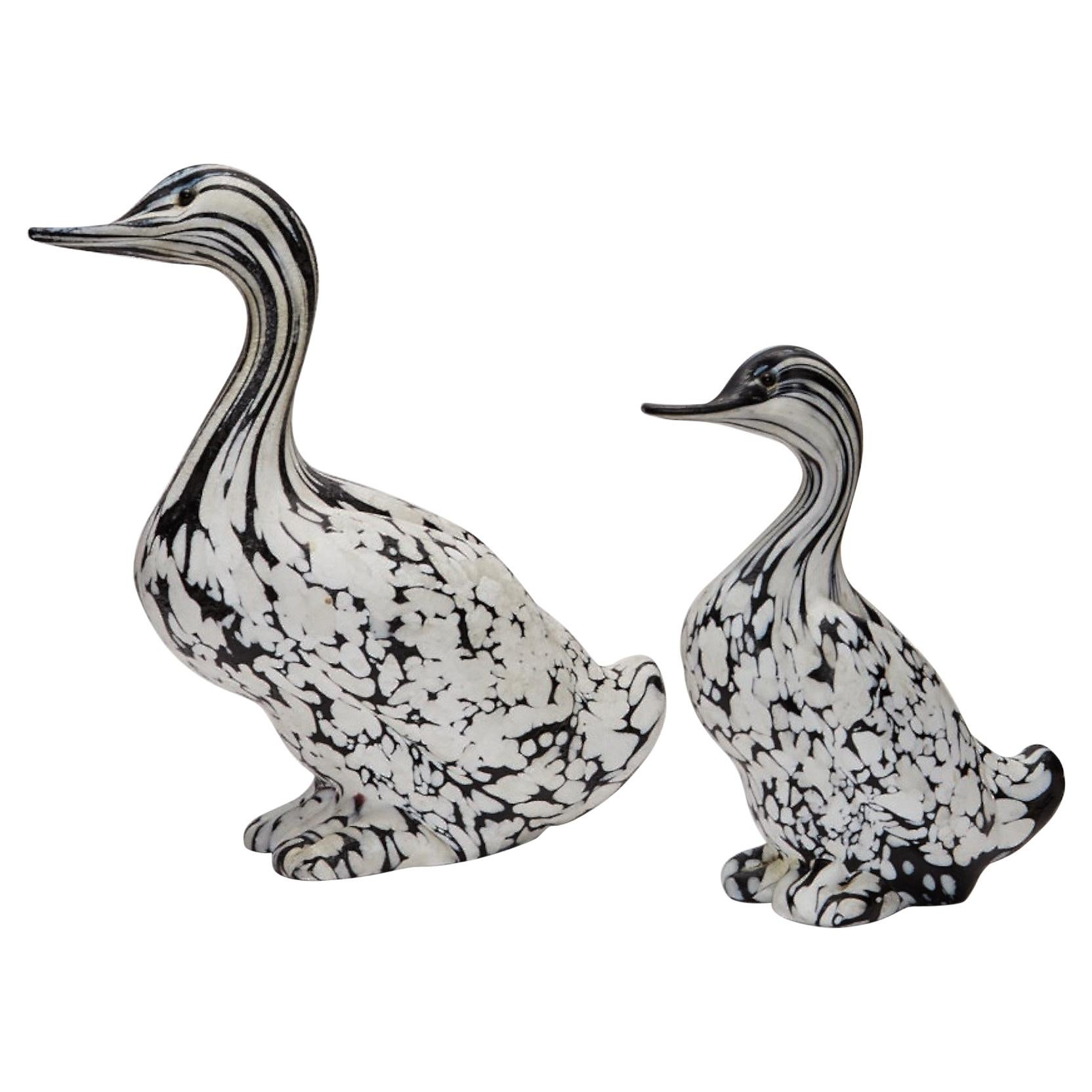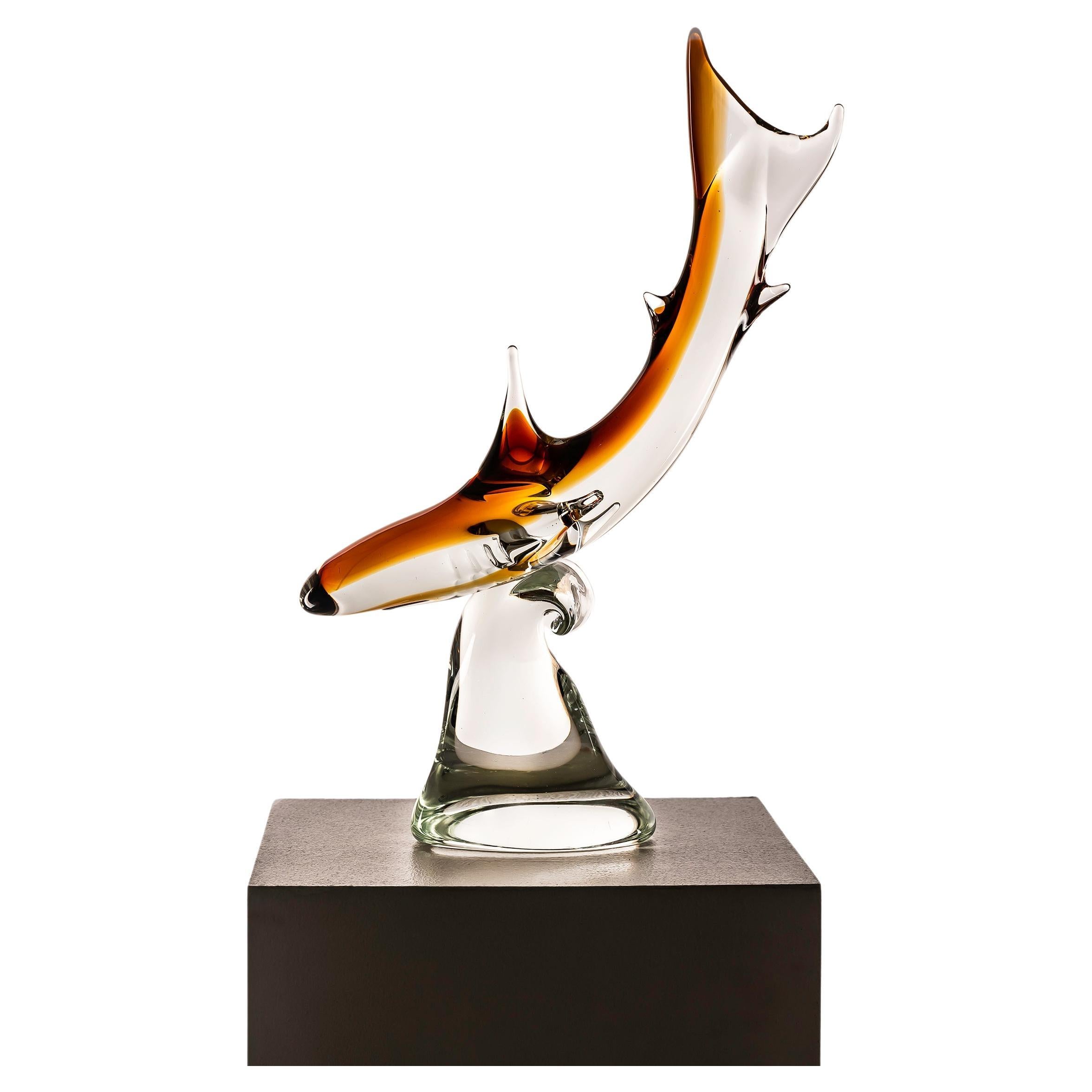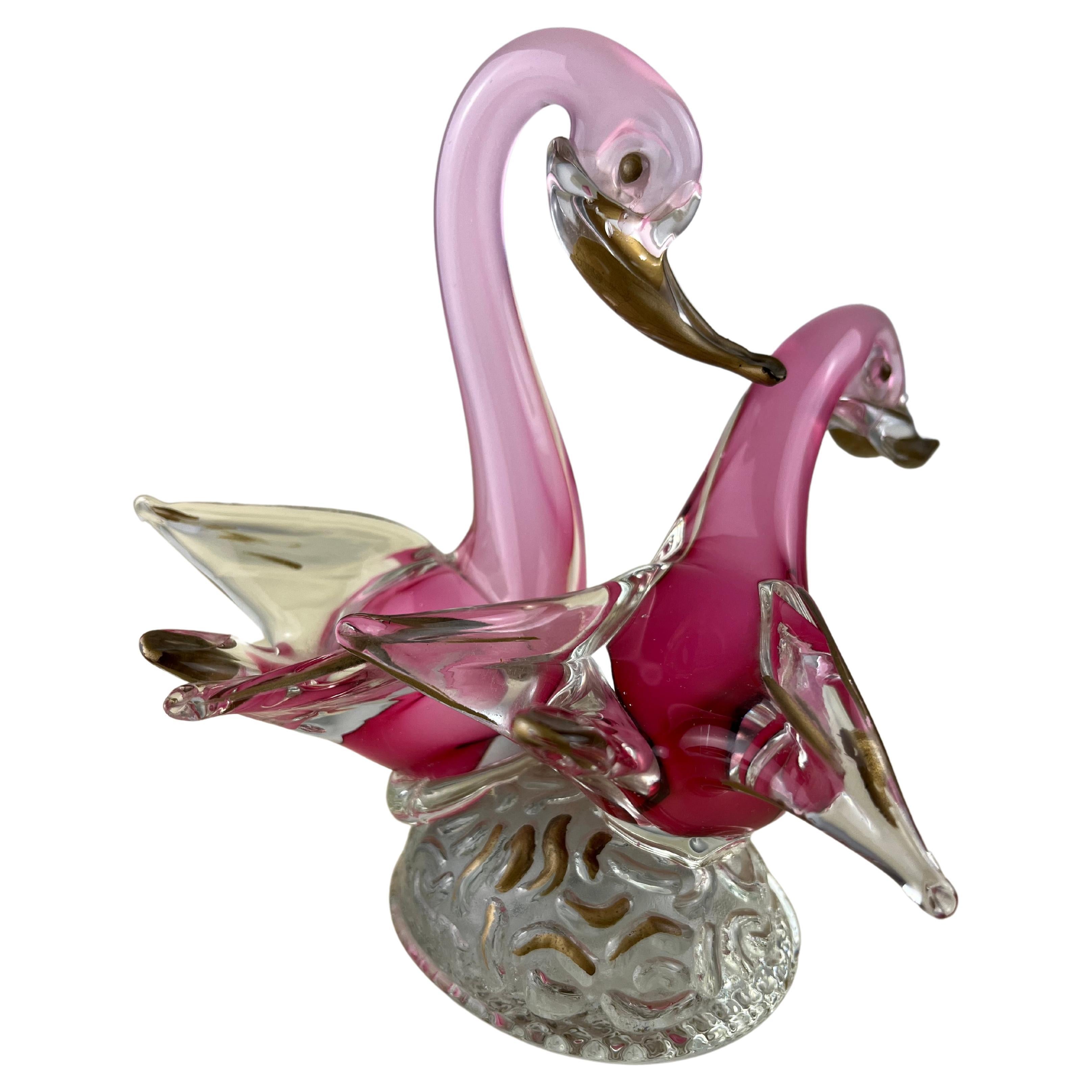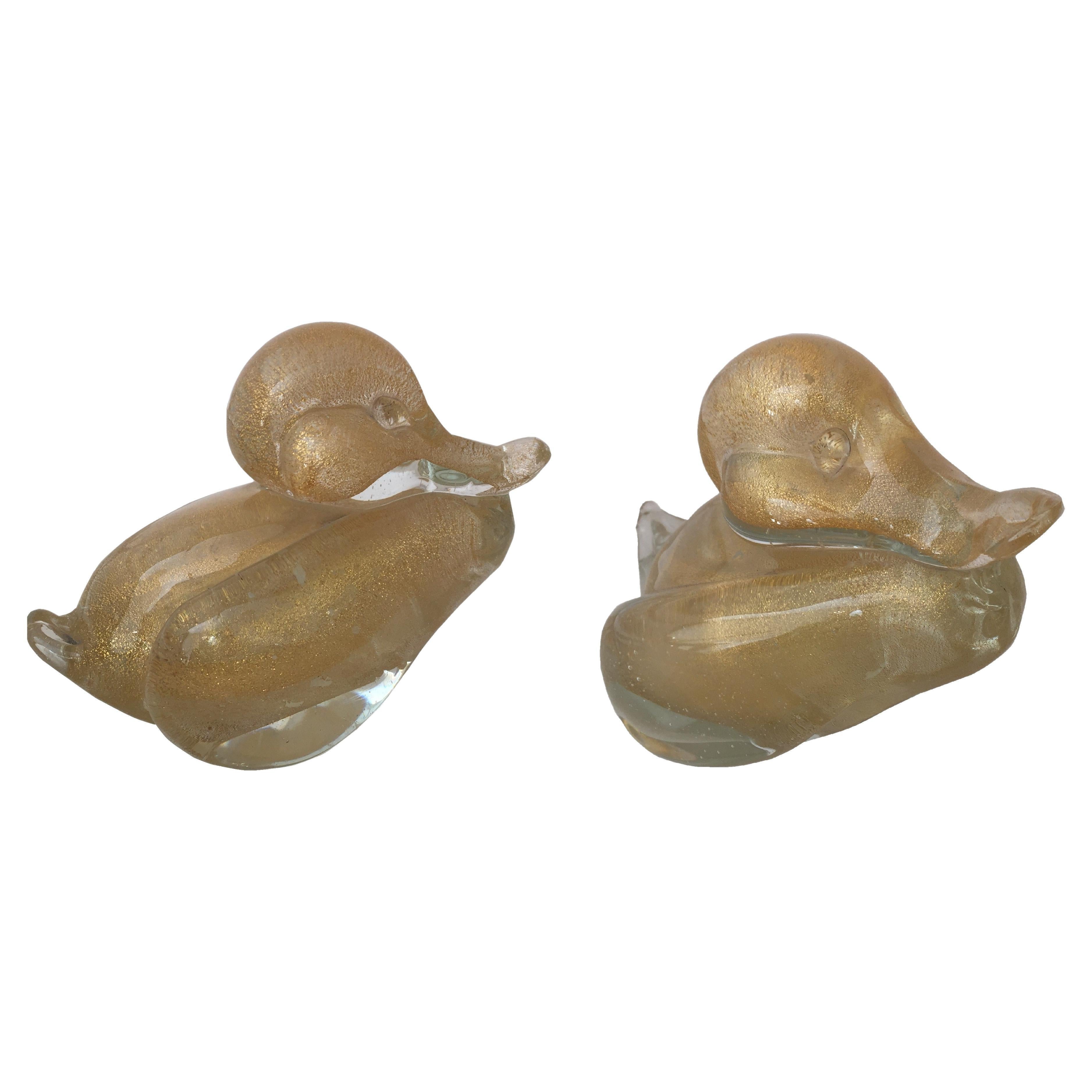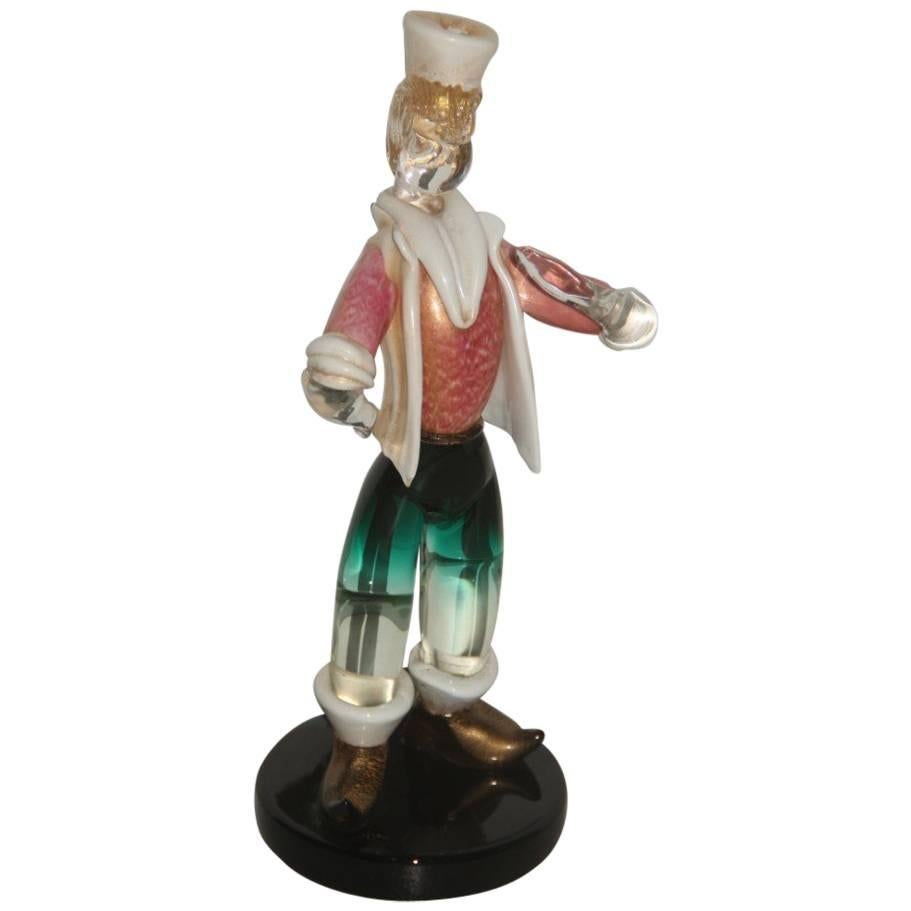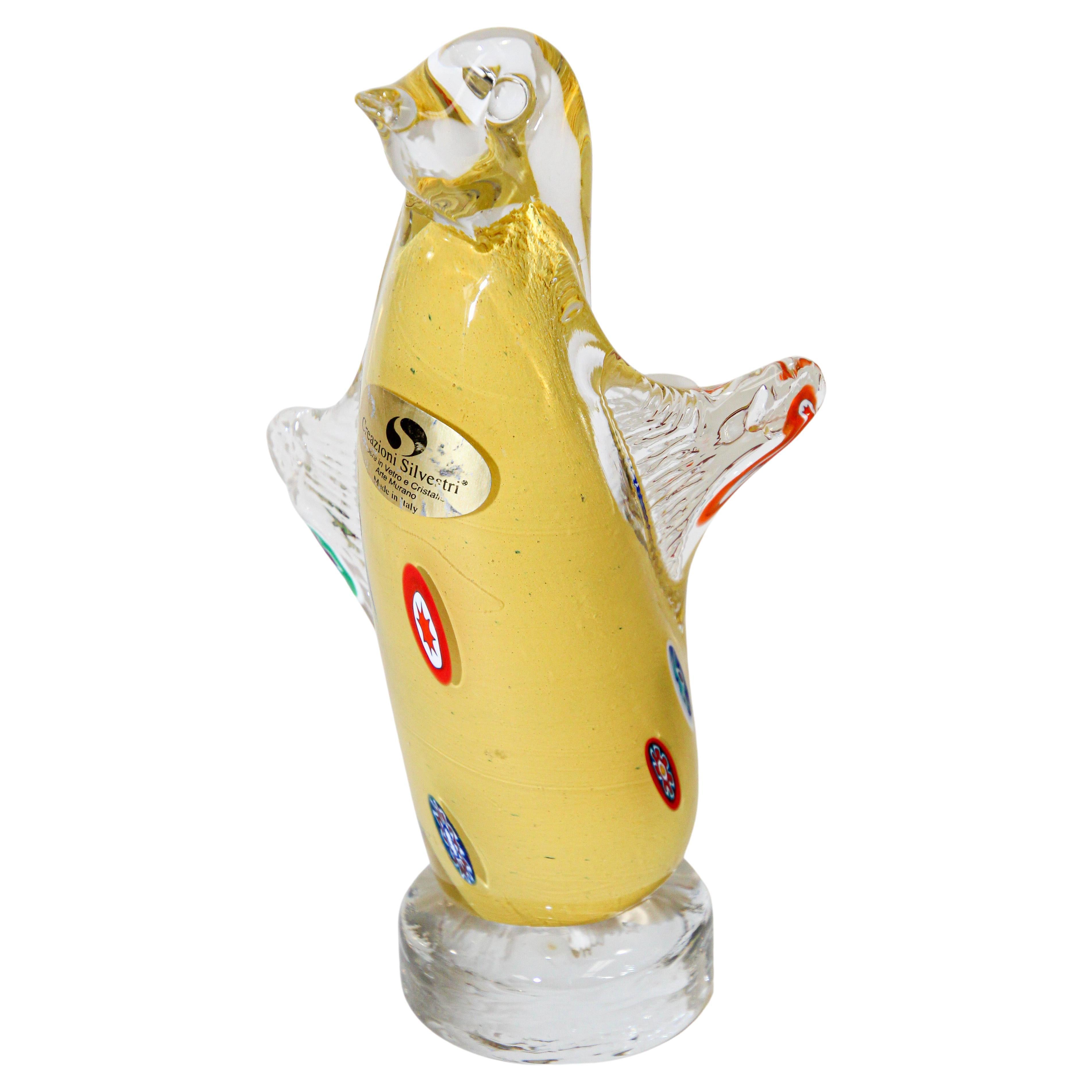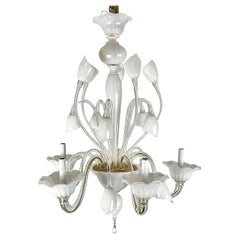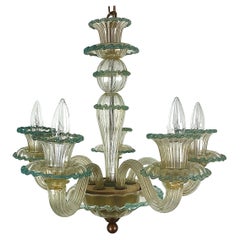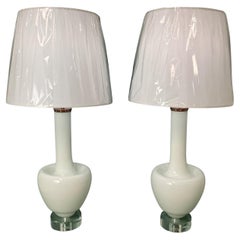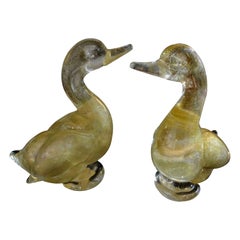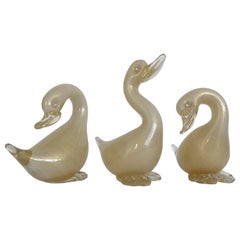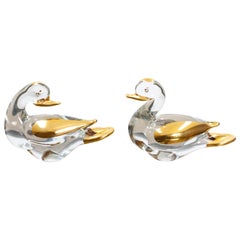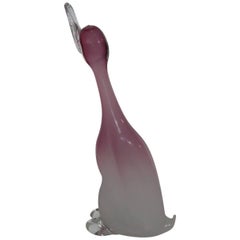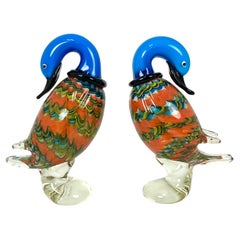
1960'S Murano Glass Ducks
View Similar Items
Want more images or videos?
Request additional images or videos from the seller
1 of 7
1960'S Murano Glass Ducks
About the Item
- Dimensions:Height: 10 in (25.4 cm)Width: 6 in (15.24 cm)Depth: 4 in (10.16 cm)
- Sold As:Set of 2
- Style:Mid-Century Modern (Of the Period)
- Materials and Techniques:
- Place of Origin:
- Period:
- Date of Manufacture:1960
- Condition:Wear consistent with age and use.
- Seller Location:West Palm Beach, FL
- Reference Number:1stDibs: LU10170243118042
About the Seller
No Reviews Yet
Vetted Professional Seller
Every seller passes strict standards for authenticity and reliability
1stDibs seller since 2024
Typical response time: 11 hours
Authenticity Guarantee
In the unlikely event there’s an issue with an item’s authenticity, contact us within 1 year for a full refund. DetailsMoney-Back Guarantee
If your item is not as described, is damaged in transit, or does not arrive, contact us within 7 days for a full refund. Details24-Hour Cancellation
You have a 24-hour grace period in which to reconsider your purchase, with no questions asked.Vetted Professional Sellers
Our world-class sellers must adhere to strict standards for service and quality, maintaining the integrity of our listings.Price-Match Guarantee
If you find that a seller listed the same item for a lower price elsewhere, we’ll match it.Trusted Global Delivery
Our best-in-class carrier network provides specialized shipping options worldwide, including custom delivery.More From This Seller
View AllVintage 1960's Pink Murano Glass Table Lamps
Located in West Palm Beach, FL
Beautiful Hand Blown Pink Murano Glass Mid-Century Lamp pair. Mint condition with Lucite Bases and nickel-plated hardware. Comes with two lucite finials.
Category
Vintage 1960s Italian Mid-Century Modern Table Lamps
Materials
Metal
$4,800 / set
Vintage Murano Glass Chandelier
Located in West Palm Beach, FL
Very unique hand-blown Murano glass chandelier. Elegant lines that would complement contemporary, traditional, and even Art Deco decor. White and clear glass for a clean sharp look. ...
Category
Vintage 1960s Italian Hollywood Regency Chandeliers and Pendants
Materials
Murano Glass
Vintage Murano Glass Chandelier
Located in West Palm Beach, FL
Charming old Venetian Glass mini-Chandelier. Fully restored with all new sockets, wires, chain and canopy. Unusual teal trim glass with gold flecked clear glass. Very charming for a ...
Category
Vintage 1930s Italian Hollywood Regency Chandeliers and Pendants
Materials
Murano Glass
Vintage White Murano Glass Table Lamps
Located in West Palm Beach, FL
Very special, rare Murano Cased Glass lamp pair with 2" thick Lucite Bases. Very unusual in style and shape. All new wires and high-quality brass sockets. Shades are not included an...
Category
Vintage 1960s Italian Mid-Century Modern Table Lamps
Materials
Murano Glass
$4,800 / set
Donghia Signed Murano Glass Table Lamps
By Angelo Donghia
Located in West Palm Beach, FL
Fully rewired with gray twist cotton cording. New nickel-plated brass sockets and harps with dew drop matching glass finials. Gorgeous hand-blown water blue Murano glass commissioned...
Category
Vintage 1980s Italian Mid-Century Modern Table Lamps
Materials
Art Glass
$5,000 / set
Hand Blown Murano Glass Semi Flush Fixture
Located in West Palm Beach, FL
Gorgeous Large Hand-Blown Italian Glass Semi Flush Fixture. Ribbed salt glass bowl with elegant pale pink ruffle trim. Dramatic addition to any room.
...
Category
Vintage 1960s Italian Empire Flush Mount
Materials
Murano Glass
You May Also Like
Pair of Murano Glass Ducks by Fratelli
By Barovier, Fratelli, Fratelli Toso, Seguso, Salviati
Located in Houston, TX
Pair of Murano glass ducks by Fratelli.
Beautiful pair of gold murano glass ducks by Fratelli. This lovely pair of murano glass ducks are a gold gl...
Category
Vintage 1940s Italian Hollywood Regency Animal Sculptures
Materials
Blown Glass, Murano Glass
$995 / set
Set of 3 Murano Ducks
Located in Los Angeles, CA
Set of 3 vintage hand blown Murano glass ducks infused with gold flecks, with Swarovski crystal eyes / Made in Italy, circa 1980s
"Murano Glass" etc...
Category
Late 20th Century Italian Modern Animal Sculptures
Materials
Murano Glass
$750 Sale Price / set
50% Off
Two Murano Ducks Glass 24 Carat Gold, 1980s
By Vintage Murano Gallery
Located in Den Haag, NL
Two adorable little ducks. Made by Murano, Italy, 1980s. Hollywood Regency style.
Chrystal glass with 24-carat gold. Very nice set. Excellent condition.
Category
Vintage 1980s Italian Hollywood Regency Animal Sculptures
Materials
Crystal
Seguso Duck Murano Glass Alabaster 1960 Murano Glass
By Archimede Seguso
Located in Palermo, Sicily
Duck Murano glass imitation alabaster Seguso, 1960.
Category
Vintage 1960s Italian Mid-Century Modern Animal Sculptures
Materials
Murano Glass
Ducks Murano, 1930, Italian, Sing Salviati & C
By Salviati
Located in Ciudad Autónoma Buenos Aires, C
Murano
We have specialized in the sale of Art Deco and Art Nouveau and Vintage styles since 1982. If you have any questions we are at your disposal.
Pushing the button that reads 'View All From Seller'. And you can see more objects to the style for sale.
Salviati & C
Measures: Violet : 33 long x 10 high x 5.5 depth
Green: 30 long x 9 high x 5.5 depth
The lawyer Antonio Salviati and his dream
In 1859 in his premises at Number 731 of Dorsoduro, Venice the “Salviati Dott. Antonio fu Bartolomeo” company was established. This is when, Vicenza-born lawyer Antonio Salviati started the entrepreneurial career, moved by a passion for the precious mosaics of the Basilica of San Marco and fascinated by Murano glass art, he decided to start-up his own production of mosaics and objects in Murano glass.
An ambitious and far-sighted goal pushed him along this path: to revive the fate of Murano glass production that has been fallen for decades.
A challenge which finds the maximum support from two fundamental figures in the history of Murano glass: the mayor of the island, Antonio Colleoni, and the Abbot Vincenzo Zanetti, founder of the glass museum and of the first art school for glass masters.
The first successes and international investments
The launchpad was the “First Glassmakers’ Exhibition” in 1864 in which Salviati participated with a monumental mosaic that earns him a prize superior to the Gold Medal. The success achieved affirmed the credibility of the Company which thus started its glass production in Palazzo da Mula.
The new corporate and productive reality needed investors and the lawyer started to internationalise the company by addressing the economic and financial market across the Channel.
The UK immediately showed huge interest in Salviati’s mosaics – as testified by the mosaic that can be seen on the façade of the current Apple Store in Regent Street, London. It was also in London, on 21st December 1866, that the “Società Anonima per Azioni Salviati & C.” was established with the support of diplomat Sir Austen Henry Layard and historian William Drake. The new corporate set-up was further established with the purchase of a new headquarter, this time on the Riva dei Vetrai in Murano.
The universal show of Paris in 1867 celebrated the relaunch project of Antonio Salviati
“Venice owes a debt of gratitude to the knight Salviati in the resurgence for one of the most legitimately famous of its industries”. From Esposizione Illustrata di Parigi, 1867 pg. 275.
“Venice and Italy have gain huge success in the Universal Exhibition. The resurgence of one of the city’s most famous industries is consecrated in this very occasion by the gold medal awarded by the jury to Mr Salviati […] the crowd […] is gathering around the display cases that hold those pieces of glass that are so transparent and so light as to appear like woven air, impregnated, when in their elegant forms that become rainbows of those iridescent reflections that cover them at the artist’s whim – the author of a real ray of sunshine from the beautiful and splendid Venice”. From Esposizione Illustrata di Parigi, 1867 pg. 311
The fundamental role of training in murano glass
Training plays a fundamental role for the Company; attendance at the Art School was made compulsory for “[…] all the young workers of the Factory who don’t only tire themselves in manual work. This was established with the idea not only to lift their dignity and their initially limited aspirations, […] but also to improve their artistic education and thereby facilitate an improvement also in their economic situation”.
Together with the art school, a free school was also set up to teach all employees to read and write.
Diversification in production and made-to-measure projects
In a short time, Salviati & C. diversified its production to include glasses, cups, amphoras, and vials which guaranteed the first prize in the universal exhibition for three consecutive years.
Its mosaic production also flourished, being used in world-class projects: from the Houses of Parliament in London, to the Viceroy’s palace in Alessandria in Egypt, to the Opera House of Paris, including the private homes of wealthy New York personality.
The entire 19th century for Salviati & C. was represented by development, success and fame in the national and international markets, and the Company became a symbol and reference point of Murano glass art throughout the world.
The Salviati legacy at the turn of the century
On the death of Antonio Salviati in 1890, first his three children followed one another at the helm of the company and then Maurizio Camerino, previously general manager. It was thanks to him that the decorative mosaic project of the Stanford Memorial Church in Palo Alto (California, USA) took place after 12 years of work. As well as the opening of a sales point in Via Montenapoleone in Milan and the institution of a museum collection of Murano glass from the 19th and 20th centuries.
The post-war years, biennials and lighting
After Maurizio Camerino’s death in 1931, his three children took over the helm of the company: its solid foundations allowed them to strive for new important goals in the art world, participating in the Biennials of 1932 and 1934.
Not even the Second World War could tarnish the strength of the Salviati brand: in the post-war years Renzo Camerino renewed the ruined production headquarter and enthusiastically restored all his commercial contacts. Thanks to his grandson Renzo Tedeschi (newly graduated in Engineering at the Polytechnic of Turin and upon his return from an apprenticeship in the United States), Salviati launched its production in lighting appliances.
The following years saw intense growth in the number of collaborations with renowned artists and designers. In 1959, the production site was moved to Fondamenta Radi 16, where it still stands today.
The great lighting projects
The larger production area allowed the company to further expand the international market in the field of architectural lighting.
A number of projects were undertaken, such as the 9-tonne, 22-metres high chandelier in the Chamber of Commerce in Parma, the ceiling illumination in the premises of the World Intellectual Property Organisation in Geneva and the Kowloon Hotel in Hong Kong; not to mention the sound-absorbing windows of the Aula Nervi in the Vatican and the lighting system of the great honour hall of the Philippine Plaza Hotel in Manila in collaboration with architect John Marsteller.
The reputation of Salviati & C. was further affirmed by the commission – after an international call for bids – for twelve 11-metre high chandeliers for the Tonhalle concert hall in Dusseldorf, made using an innovative system of modular glass elements – “LS- System” – one of the today company’s cornerstones.
Salviati from the modern age to the present
The story of Salviati continues in the modern era, keeping the focus on creating an innovative style that had distinguished it since its inception. Participation in international exhibitions increased, such as the Venice Biennials from 1958 to 1972 (the final year in which Murano glass was allowed) thanks to projects by designers of the calibre of Betha and Teff Sarasin, Claire Falkestein, and Luciano Gaspari.
In 1962 Salviati was awarded with the highest recognition in the Design world, the “Compasso d’Oro” prize assigned by A.D.I. for the Marco vase designed by architect Sergio Asti.
In 1965 the company changed its name to Salviati & C. s.p.a.; then it was purchased by the Gruppo Ferruzzi in 1987 which later on it was transferred to a French company.
Since 2015 the company returned to be Venetian with the acquisition by the Umana group.
Salviati and its designers
Salviati’s designers:
Luciano Gaspari, Sergio Asti (Compasso d’Oro 1962), Claire Falkenstein, Ward Bennet, Teff and Betha Sarasin, Ingo Maurer, Ross Lovegrove, Amanda Levete, Tom Dixon, Nigel Coates, Thomas Heatherwick, Luca Nichetto, Ben Gorham...
Category
Vintage 1930s Italian Art Deco Animal Sculptures
Materials
Murano Glass
$3,500 / set
Archimede Seguso Pair of Murano Glass Animal Sculptures of Black & White Ducks
By Archimede Seguso
Located in London, GB
A pair of black and white animal sculptures by Archimede Seguso (1909-1999) Italy made circa 1970 comprising of two large ducks, in solid opaque...
Category
Vintage 1970s Italian Mid-Century Modern Animal Sculptures
Materials
Art Glass, Blown Glass, Murano Glass
Recently Viewed
View AllMore Ways To Browse
Fondica Flamingo
Fox Door Knocker
Franz Bergman Cobra
Frederick Weinberg Bronze Horse Sculpture
French Faience Pigs
Gene Rebecca Tobey
Gene Tobey
Georg Jensen Elephant
Giampaolo Ghisetti
Gianluigi Mele
Golden Bronze Glass Peacock
Gorini Freres
Gunnar Florning
Haeger Gazelle
Hagenauer Wood Bear
Hanging Brass Monkey
Herend Horse
Hotel Turtle Bell

